In 1927 Edward Johns & Co., (later Armitage Ware and then Ideal Standard) produced the very first coloured sanitary ware in the world. Biscuit-fired ware was shipped to their sister company, Richards Tiles Ltd in Tunstall, who applied a mottled colour glaze and fired it again. Only four colours were created – Mottled Armitage Green, Mottled Amber, Mottled Staffordshire Blue and Mottled Dove Grey – but matched with Richards Tiles products they allowed a wide range of possibilities. Within a few years a range of solid colours were produced at Armitage and the mottled range was not produced again after WW2 forced its halt.
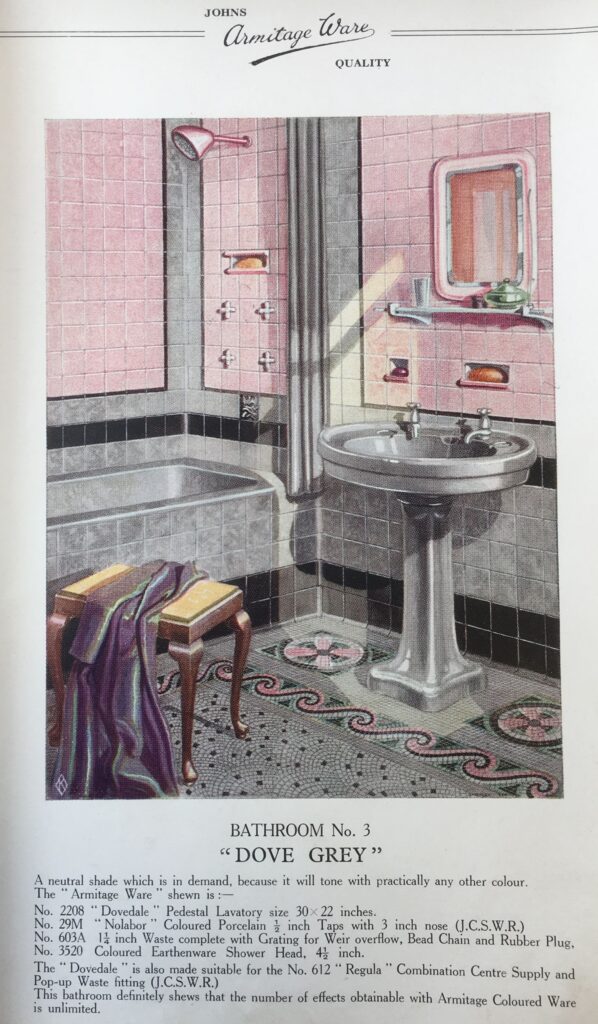
After the war it took some time before coloured production restarted and when it did the salesmen needed their samples to show off the ware and the potential colours. This sample which is about 4” high and 3” x 4” across is from the early to mid 1950s:
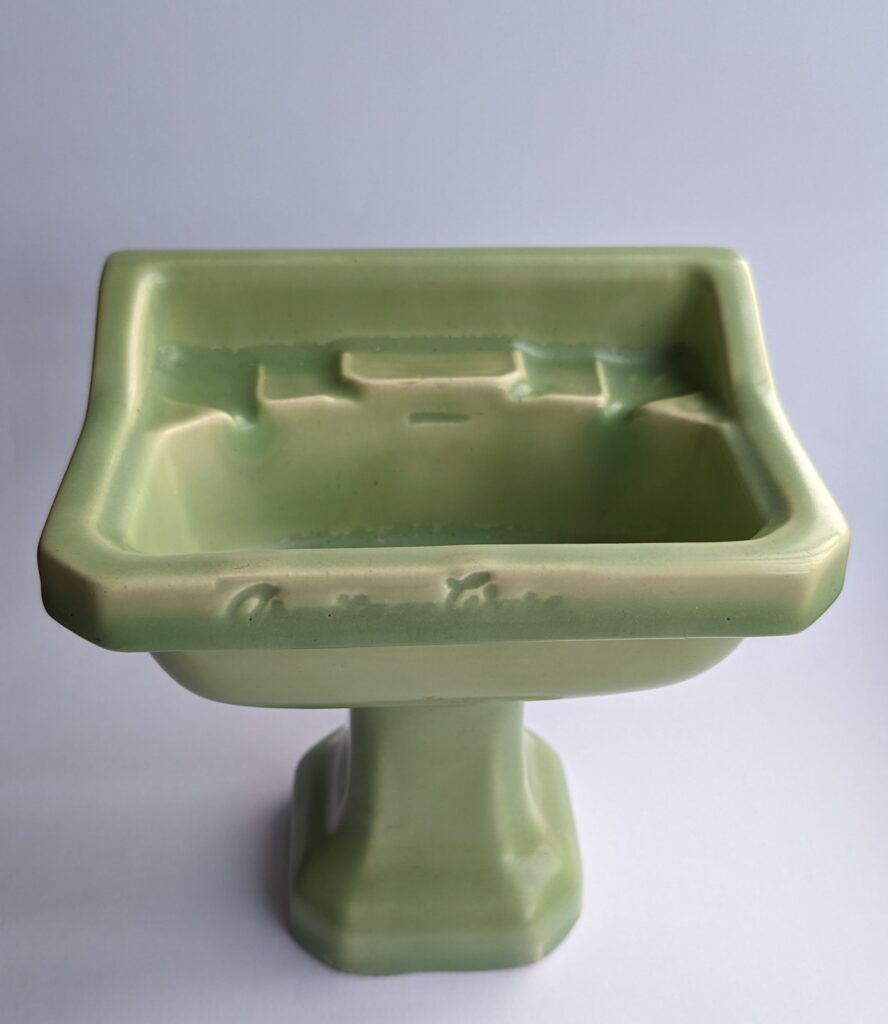
If you were travelling overseas selling products these samples were great but if all you wanted was to show the colour to customers in the UK it was much simpler to produce smaller colour samples.
This box of coloured samples, each about 1½ inches across, were found in an antiques shop in Oxfordshire.
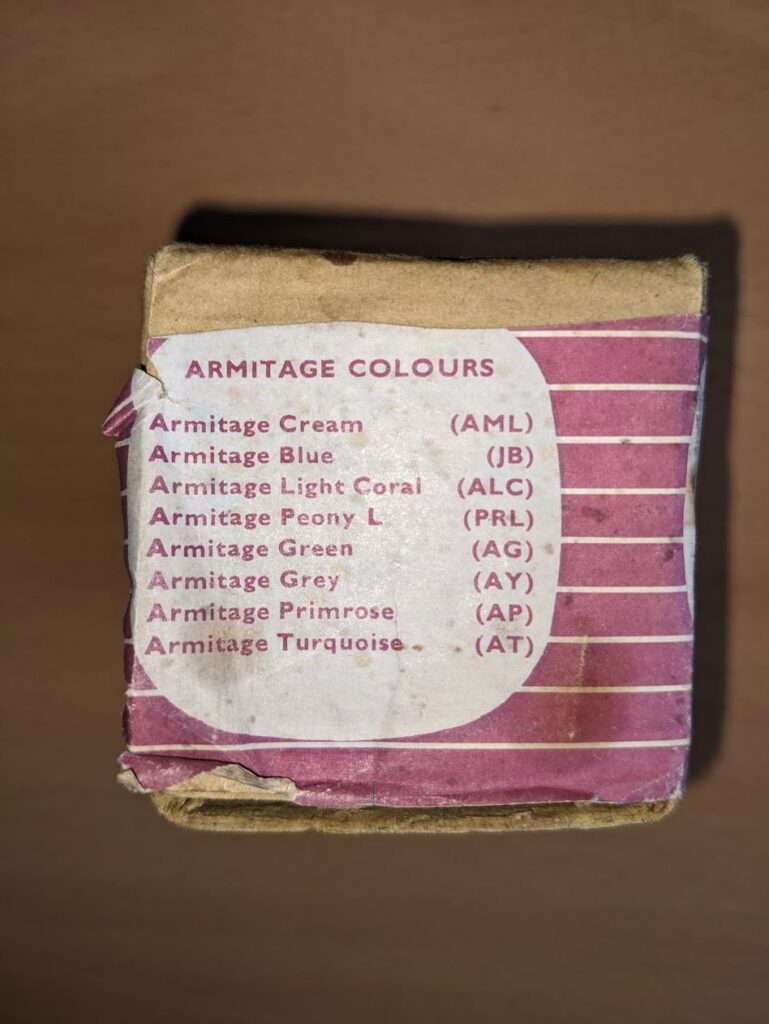
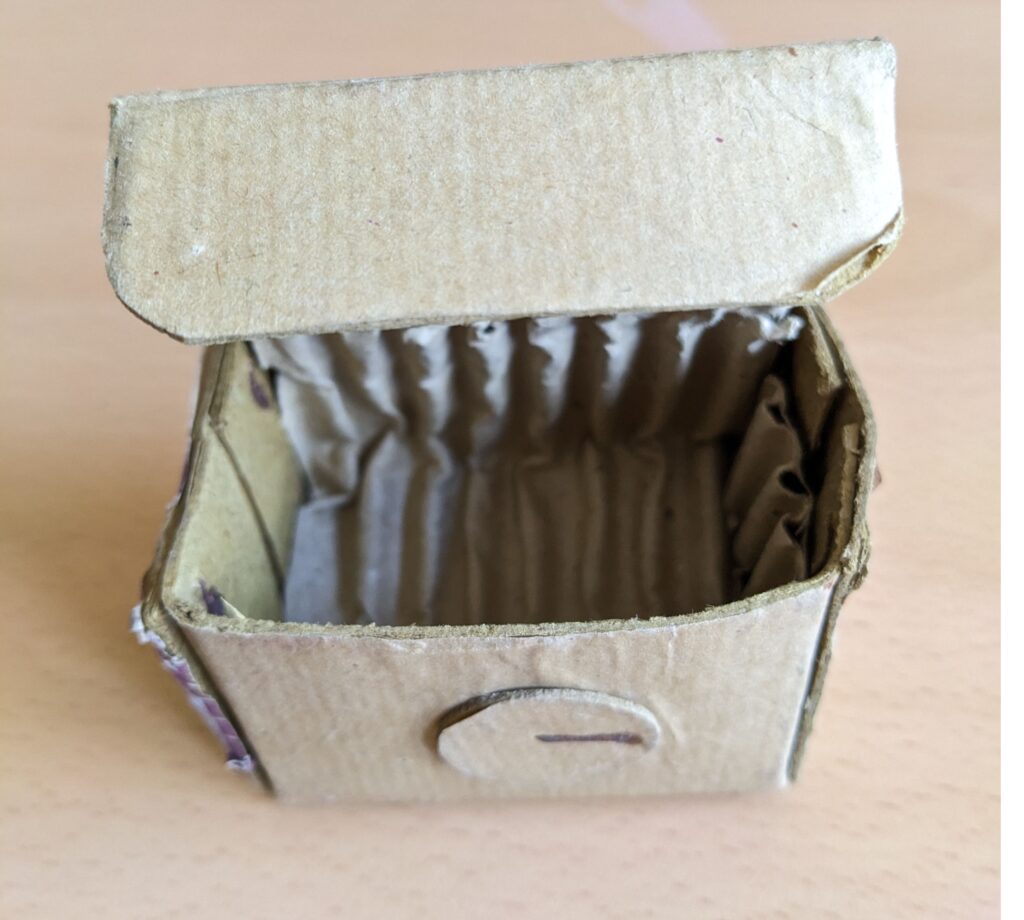

Based on the colour samples it was produced in either the late 1950s or early 1960s. There were no polystyrene packing beads around back then – the box was simply cardboard, and the samples were separated by little squares of cardboard and wrapped in tissue paper.

The Armitage Blue sample was missing. The original name of this blue was Jubilee Blue, hence the code JB, and was named in honour of the silver jubilee of King George V when the colour was introduced in 1935. Sky Blue wasn’t introduced until the early 1960s with Jubilee Blue being withdrawn in 1969.
Light Coral and Peony were both introduced in the first set of solid colours in the early 1930s although if you saw them in Australia you would probably have seen peony labelled as burgundy. Light Coral had a few minor variations in colour and was eventually just Coral and was still in production in 1980 but Peony was withdrawn in the early 1960s.
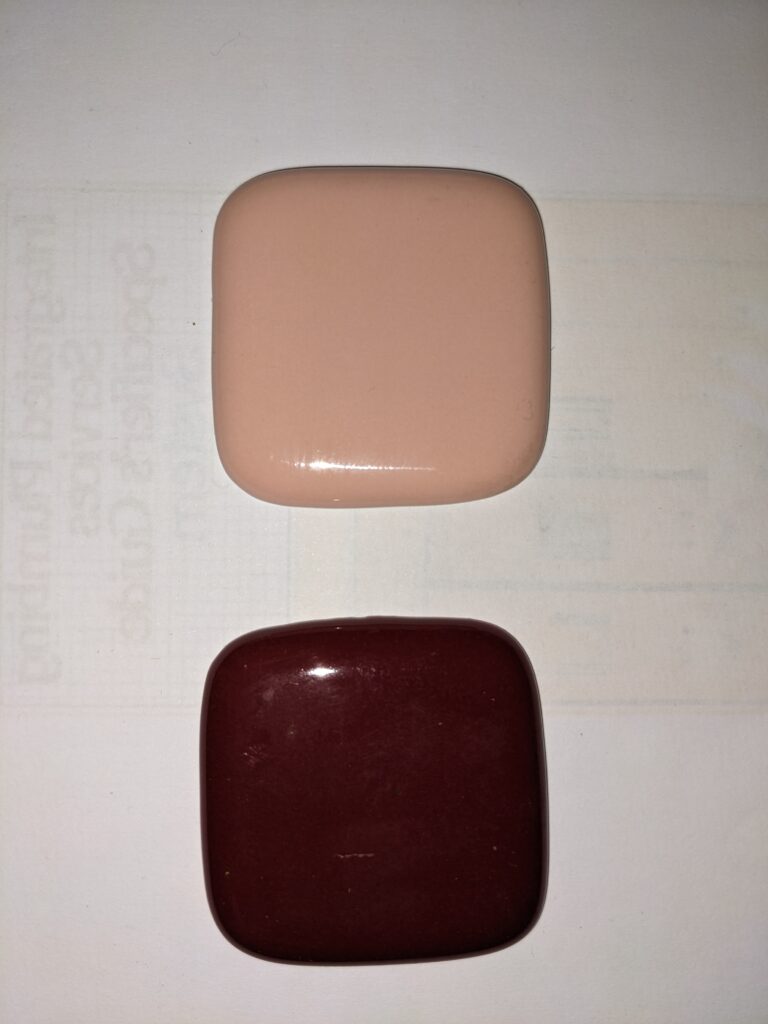

This next set of samples are, from the top, Turquoise, Green and Grey. Before the war there were four different green versions – mottled green, Aquagreen, Pastel Green and Spray Green. The Green shown in the middle here was originally called Aquagreen. Turquoise was introduced in 1957 and, like Coral, was still in the range in 1980. The Grey at the bottom of the photo was introduced along with Turquoise in 1957 but was withdrawn in 1969.
This Primrose was one of the first solid colours and was now slightly darker than when originally introduced and was also still there in 1980. The lower colour here was Cream, introduced in 1951 and withdrawn in the early 1960s.
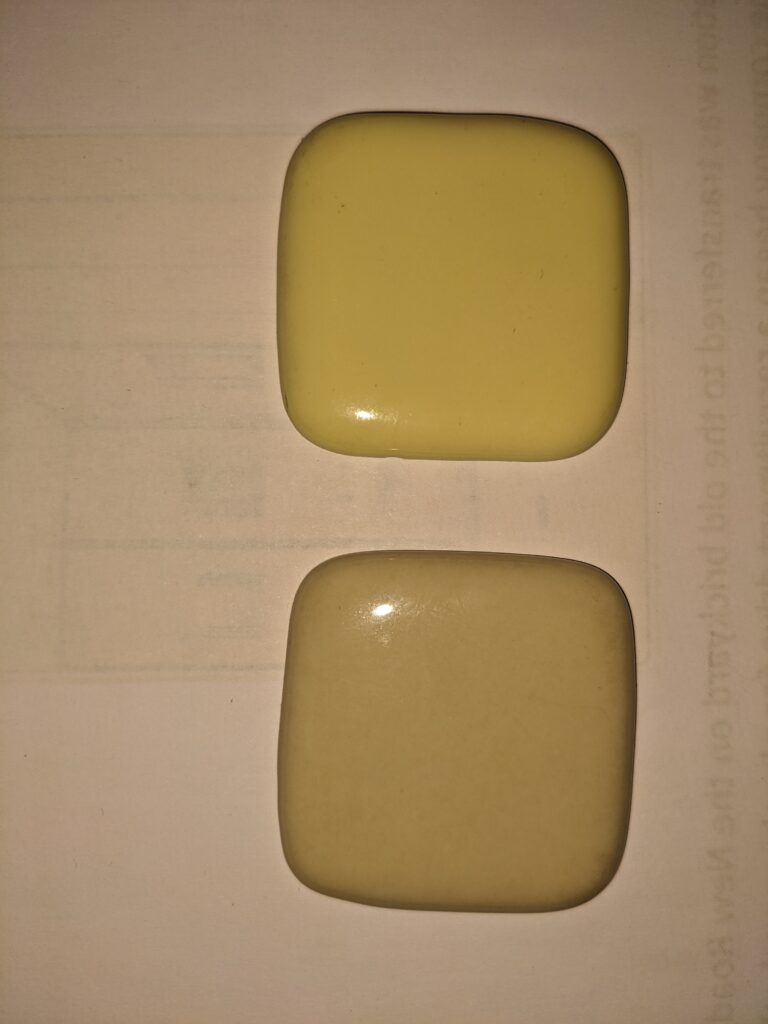
This page from a mid to late 1950s brochure put out in conjunction with their sister company, Richards Tiles, shows what the company was using to entice their customers.
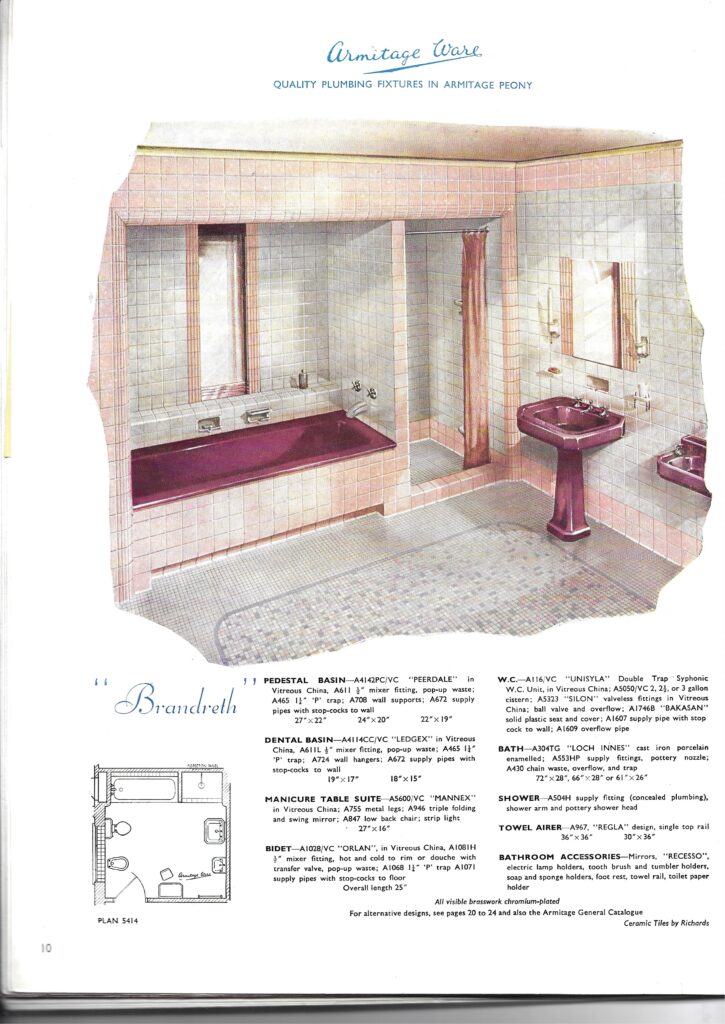

When I was working in the sales office around 1970 I had a collection of colour samples. I had some of the small ceramic tiles and also several sets of plastic squares held together by a small chain looped through a hole in the corner of each. They got used often.
I’m trying to get information on an Armitage paper disperser, patent number 3540. It has images of fish on it. I am unable to find any images online. I’m not sure if it is painted or if the image is transferred onto it.
The image is transferred on and then fired so that it becomes part of the glaze – thanks to Ian Kuzzy for the info.